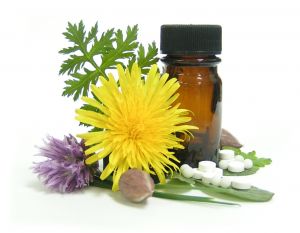A brief explanation of Homeopathy
Homeopathy started about 200 years ago with a discovery by a German doctor, Samuel Hahnemann. Wondering why quinine was useful in malaria, he took the medicine himself and found that, given to a healthy person, it temporarily produced the symptoms found in malaria. When given to a malaria patient, however, it was curative.
 Homeopathy means literally to “treat with a similar disease.” Its central principle, “Like cures like,” contrast with other medical approaches, the term allopathic means to “treat with other than the disease” and is used to denote the standard medical approach of today, which attempts to counteract symptoms. For example, a patient with diarrhea may be given a drug that slows intestinal motility.
Homeopathy means literally to “treat with a similar disease.” Its central principle, “Like cures like,” contrast with other medical approaches, the term allopathic means to “treat with other than the disease” and is used to denote the standard medical approach of today, which attempts to counteract symptoms. For example, a patient with diarrhea may be given a drug that slows intestinal motility.
To better understand how homeopathy works, it helps to consider two aspects of a disease. First, there is the immediate cause, such as a bacteria, virus, toxin, or internal immunological activity. Second, there is the patient’s response – their reaction and defenses, such as fever, inflammation and discharge. These are the body’s attempts to eliminate pathogens and toxins and to heal tissue.
While homeopaths do not ignore immediate causes, such as infection, their primary focus is on the patient’s attempts to respond and heal. Their aim is to strengthen the patient’s defenses and shift the balance in favor of recovery.
Dr. Hahnemann found that substances could be used to stimulate healing by applying the principle of “like cures like” in very specific ways. He would give the patient a substance that would gently nudge their system in the direction of the “disease”, reproducing the same (or almost the same) syndrome or whole set of particular symptoms in a mild form.
He found this to be a very effective way to stimulate their natural defenses. It is almost as if the patient’s defenses cannot distinguish between the natural disease and what the similar substance is doing. Thus homeopaths fine-tune the use of medicines to enhance the patient’s own attempts to overcome the disease.
In this manners, homeopathy employs hundreds of substances that have all been thoroughly studied as to their unique effects on body, emotions and mind. Some of these are the common herbs; others are from poisonous plants; some remedies are made from toxins and venoms.
Homeopathic pharmacists carefully prepare these many substances in a time-tested manner that enhances their usefulness while minimizing potential harm. They carefully dilute them to eliminate toxic effects, at the same time shaking or grinding them in a way that energizes their helpful effect. This use of a dilute similar to the use of vaccines or to the method of allergy desensitization.
In summary, homeopathy stimulates the healing process through temporarily establishing an artificial disturbance, when similar to the disturbance caused by the disease, makes the body worked harder to get well. The healing changes that follow are the result of this stimulation.
While simple in theory, this process requires skill and experience, particularly in chronic conditions. The homeopathic doctor carefully evaluates the changes that occur after use of each homeopathic medicine. In this way, the patient can be guided to recovery of their health over the weeks or months necessary for the body to repel the disease and regrow damaged tissues.
